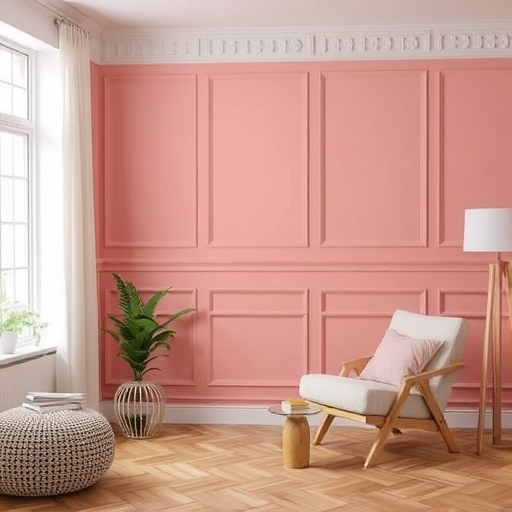Can You Paint Paneling? A Comprehensive Guide
Paneling can be a stylish addition to any home, but it often comes with a dated look that many homeowners want to update. If you’re considering transforming your paneling into a more modern aesthetic, you may be asking yourself: can you paint paneling? The answer is yes! However, there are several factors to consider before diving into your painting project. This article will guide you through the process, tips, and tricks for successfully painting paneling and achieving a professional finish.
Understanding Paneling
Before we dive into the painting process, it’s essential to understand what paneling is and the various types you may encounter in your home.
Types of Paneling
- Wood Paneling: Solid wood panels that can be stained or painted.
- MDF Paneling: Medium-density fiberboard, often used for a smooth surface and generally less expensive.
- Plywood Paneling: A more affordable option made from thin layers of wood veneer.
- Vinyl Paneling: A plastic alternative that mimics wood and is usually found in bathrooms or basements.
- Modernize a Space: Update the look of a room to fit contemporary styles.
- Increase Light: Lighter colors can make a room feel larger and more inviting.
- Protect the Surface: Paint can add a layer of protection against scratches and stains.
- Personalize Your Space: A fresh coat of paint allows you to express your unique style.
- Condition: Check for any damage, rot, or mold that needs to be addressed.
- Type: Identify whether your paneling is wood, MDF, plywood, or vinyl, as this will affect your painting technique.
- Paint: Choose a high-quality latex or oil-based paint.
- Primer: A stain-blocking primer is essential for wood paneling.
- Sandpaper: For smoothing the surface.
- Cleaner: A degreaser or mild soap for cleaning.
- Paintbrushes and Rollers: For application.
- Drop Cloths: To protect floors and furniture.
- Painter’s Tape: For crisp edges.
- Use a degreaser or mild soap to remove dirt and grease.
- Rinse and let it dry completely before proceeding.
- Lightly sand the surface to create a rough texture for the paint to adhere to.
- Pay special attention to grooves and edges.
- Use a stain-blocking primer for wood paneling to prevent bleed-through.
- Apply one or two coats, allowing adequate drying time between layers.
- Latex Paint: Ideal for most interior paneling; it dries quickly and is easy to clean.
- Oil-Based Paint: Offers a durable finish but takes longer to dry and requires solvents for cleanup.
- After the final coat dries, inspect for any missed spots or uneven areas.
- Touch up as necessary with a brush.
- Test Color: Always test your paint color on a small section of paneling before committing to the entire surface.
- Use High-Quality Supplies: Good brushes and rollers can significantly improve the finish.
- Consider Texture: If you want a more textured finish, consider using a sponge or rag for a unique look.
- Ventilation: Ensure good ventilation while painting to avoid buildup of fumes.
Pros and Cons of Paneling
| Pros | Cons |
|---|---|
| Adds texture and warmth | Can look outdated |
| Easy to install | May require extensive prep work |
| Available in various styles | Can be expensive if solid wood |
| Hides imperfections in walls | May absorb moisture (vinyl) |
Why Paint Paneling?
Painting paneling can:
Preparing to Paint Paneling
Preparation is crucial for a successful painting project. Here’s how to get started:
Step 1: Assess Your Paneling
Step 2: Gather Your Supplies
Here’s a list of supplies you’ll need:
Step 3: Clean the Surface
Step 4: Sand the Paneling
Step 5: Apply Primer
Painting Techniques for Paneling
Now that your paneling is prepared, it’s time to paint! Here’s how to do it effectively.
Choosing the Right Paint
Application Methods
1. Brush and Roller: Use a brush for corners and edges, and a roller for flat surfaces.
2. Spray Paint: For a smooth finish, consider using a paint sprayer, especially for larger areas.
Painting Process
1. Cut In: Use a brush to paint edges and corners first.
2. Roll the Panels: Use a roller for the larger flat areas, applying paint evenly.
3. Apply Additional Coats: Depending on the color and finish, you may need 2-3 coats. Allow each coat to dry fully before applying the next.
Finishing Touches
Tips for Successful Painting
Frequently Asked Questions (FAQ)
Can I paint over stained wood paneling?
Yes, but make sure to use a primer that can block stains to prevent bleed-through.
How long does it take for the paint to dry?
Drying times can vary based on the type of paint used, humidity, and ventilation. Generally, latex paint can dry to the touch in 1-2 hours, while oil-based paints may take longer.
Do I need to sand the paneling before painting?
Light sanding is recommended to help the paint adhere better, especially if the paneling has a glossy finish.
Can I use chalk paint on paneling?
Yes, chalk paint can be used for a matte finish and is known for requiring less prep work, but it may not be as durable as standard latex or oil-based paints.
Is it worth painting over paneling?
If you’re unhappy with the look of your paneling, painting is a cost-effective way to modernize your space without the expense of replacement.
Conclusion
Painting paneling is a viable option for homeowners looking to revamp their space. With the right preparation, materials, and techniques, you can achieve a fresh, modern look that enhances your home’s aesthetic. Whether you’re tackling a small accent wall or an entire room, taking the time to properly prepare and paint your paneling can lead to stunning results. So, roll up your sleeves, gather your supplies, and give your paneling the makeover it deserves!

